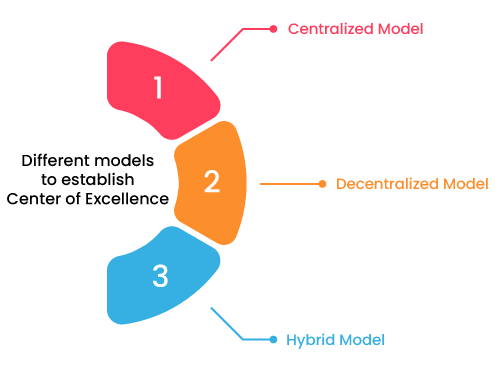
Everyone’s talking about how easy it is to build an app today—thanks to no-code and AI, even non-tech employees can spin up solutions overnight. But here’s the problem nobody likes to admit: 38% of employees bypass IT altogether and turn to shadow IT because of slow response times.
That means workflow automation is at security risks, compliance nightmares, and messy data silos waiting to explode. The real issue isn’t speed—it’s the absence of governance. But with the right no-code governance framework, businesses can innovate fast without falling into chaos. Let’s unpack what that really means…
What is No-Code Governance?
No-code governance is the framework of rules, guardrails, and best practices that ensures apps built on a no-code platform for secure, compliant, and scalable. Think of it as a safety net: while citizen developers innovate at speed, governance makes sure their creations don’t put the business at risk.
With global spending on digital transformation initiatives slated to reach $3.4 trillion by 2026, No-Code Governance emerges as a critical enabler, ensuring that rapid app development drives innovation. As it’s not about restricting creativity—it’s about providing clarity, accountability, and control.
For example, imagine a marketing team building a customer feedback management software on their own. Without governance, sensitive customer data could be exposed, or the app might duplicate existing workflows. With a proper no-code governance framework, access controls, data validation, and approval processes are in place, letting the team innovate freely while keeping the business safe.
By establishing clear business rules, policies, and best practices, organizations can foster innovation, maintain compliance, and scale apps confidently, ensuring citizen development contributes to business growth rather than creating chaos.
Understanding what no-code governance is gives us clarity, but the real question is: why does it matter for your business, and what happens if you skip it? Let’s break it down.
Why is No-Code Governance Important?
Innovation moves fast, and no-code platforms let business users turn ideas into apps in hours, not weeks. But without a governance framework or agile framework, this speed can backfire—apps may expose sensitive data, duplicate existing processes, or create hidden shadow IT that IT teams struggle to manage.
Governance ensures that citizen developers can build confidently, IT systems stay in control, and organizations can scale innovation safely.
Here’s where governance makes a real difference:
- Builds a versatile workforce: By encouraging business users to learn no-code development, organizations create teams that understand both business rules and validations, as well as programming workflows. This allows them to respond quickly to product iterations—a key driver of rapid innovation.
- Democratizes software development: Governance lets citizen developers create priority-specific applications while following clear guidelines from IT teams. This ensures innovation doesn’t compromise security or compliance.
- Prevents operational and security risks: Clear governance frameworks address shadow IT, inconsistent manual workflows, and data vulnerabilities, ensuring that apps are reliable, secure, and scalable.
- Supports sustainable growth: With proper guardrails in place, no-code adoption transforms ad-hoc development into a scalable, compliant, and repeatable process, allowing organizations to innovate without chaos.
Knowing why no-code governance matters is one thing—but putting it into practice is another. Next, we’ll cover the key principles every stakeholder should follow to build apps that are fast, secure, and compliant.
Key Factors of No-Code Governance Structure
Establish Clear Governance Rules
Governance isn’t about slowing innovation—it’s about strong application of a secure space for citizen developers. IT takes the lead in ensuring information security, access controls, processes, and system integrity, while business rules and validation should be set jointly with no-code developers and supervised by the CTO. This collaborative approach ensures that apps are built responsibly without compromising security.
Role-Based Access and Permissions
Access to data and apps should be restricted based on roles, ensuring that users only have the permissions they need. This minimizes the risk of unauthorized access and keeps sensitive information safe, while still letting citizen developers innovate freely within defined boundaries.
Also Read: Multi-factor Authentication (MFA) in action at Quixy
Competency Center Oversight
The organization’s competency center serves as the primary reference point for no-code development projects, guiding best practices, providing support, and ensuring quality. It bridges the legacy system gap between IT and developers, ensuring that governance frameworks are consistently applied without blocking innovation.
Continuous Communication
Regular communication between no-code developers, IT teams, and the competency center is essential. It ensures alignment on security, compliance, and project goals, while helping teams quickly resolve any emerging risks or bottlenecks.
Training and Enablement
Educating citizen developers on governance policies, security best practices, and compliance requirements empowers them to build apps responsibly. Well-trained teams are less likely to introduce risks, enabling rapid innovation without sacrificing safety or quality.
According to the 2023 Cost of a Data Breach Report, the typical expense of a data breach reaches $4.35 million. Moreover, 60% of these breaches result in higher costs that companies often pass on to customers.
What are the Challenges of Ungoverned No-Code?
While no-code platforms empower teams to innovate swiftly, the absence of governance can introduce significant risks:
- Shadow IT Proliferation
A staggering 80% of employees admit to using applications not approved by IT. This widespread adoption of unsanctioned tools, often without IT’s knowledge, can lead to security vulnerabilities and compliance issues. - Escalating IT Expenditure
According to Ganter, Shadow IT accounts for 30% to 40% of IT spending in large enterprises, with projections suggesting it could reach 50%. This unaccounted spending can strain budgets and divert resources from critical IT initiatives. - SaaS Waste and Redundancy
On average, companies waste $135,000 annually on unnecessary SaaS tools, often due to duplicate subscriptions and underutilized applications. This inefficiency not only impacts the bottom line but also complicates software asset management. - Data Breach Risks
The average cost of a data breach is $4.35 million, with 60% of breaches leading to increased prices passed on to consumers. Ungoverned no-code applications can inadvertently expose sensitive data, heightening the risk of breaches. - Compliance Challenges
The unregulated use of applications without proper IT oversight presents profound compliance challenges. Various industries have specific regulatory requirements governing data handling, privacy, and security.
These challenges underscore the importance of implementing a structured governance framework to mitigate risks , ensure the secure and efficient use of no-code platforms.
But No-Code Governance can help citizen developers, let us find out how?
How No-Code Governance helps Citizen Developers?
A well-established governance No-code empowers business users with standards, best practices, methodology, and certifications, giving organizations the confidence to establish and scale citizen development.
The need for guardrails needs to be clearly communicated and understood. In the end, you want to harness the benefits of no-code development to address your biggest pain points and business problems without losing out on your IT team’s experience and expertise, which it has acquired over many years.
A governance model can ensure:
- No-code developers don’t harm the organization’s processes, systems, and security.
- IT collaborates appropriately to drive successful business outcomes.
It can serve as the backbone of any citizen development program by addressing the following questions:
- Who are your citizen developers?
- In which departments will citizen developers operate?
- What types of apps will citizen developers build?
- How can citizen developers contribute to application delivery?
- What requirements must be met before deployment?
- What quality control standards must be met?
Under the umbrella of a governance model, IT teams can help citizen developers in:
- Choosing the right no-code platform
- Establishing the operational, tactical, and strategic teams
- Defining the roles and responsibilities throughout the software development lifecycle
- Understanding the technical aspects of LCNC platforms to seamlessly integrate third-party services.
- Monitoring and maintaining no-code applications
Also Read: Making Shadow IT a Frenemy
How Governance Can Curb “Shadow IT” in an Organization?
CEOs and CIOs often bring up “shadow IT” when arguing against no-code platforms. They argue that no-code platforms allow citizen developers or at least give them an opportunity to independently build applications without any intervention from IT, and there is a risk associated with it. What’s the risk?
Citizen developers may end up building half-baked applications, and the IT team may not be aware of it. Such incompetent applications may float across different departments and hamper the organization’s innovation goals. In other words, LCNC platforms potentially allow business users to form a “secret society of application development.” This secret society is what we call Shadow IT.
The downside of shadow IT
- Shadow IT can derail your entire innovation program by making no-code development unaccountable in your organization.
- Shadow IT creates a false impression that no-code platforms don’t require any prior training, and anyone can jump in and start building applications – which is not the case.
- Shadow IT creates unmonitored, unmaintained pockets of data-sharing and reporting within an organization, something that can put proprietary data and key assets at risk.
- Shadow creates systems that may not be interoperable with other internal programs.
A well-established IT governance model can bring that much-needed accountability and make no-code development collaborative and successful.

How to Create Effective No-Code Governance Framework?
Under citizen development, business users have the freedom to leverage no-code platforms, but at the same time, their roles, responsibilities, and permissions need to be defined to prevent the creation of shadow IT. This can be achieved through a governance model that defines the scope of work at multiple levels.
You can follow a top-down approach when building your IT governance model, starting from a single authority that governs your entire citizen development program, where each program may have multiple projects and initiatives. This office can be housed within your IT department and can be headed by your CTO.
The office can establish the best practices for no-code development and implement them across the organization so that all teams (technical and non-technical) are on the same page. Other responsibilities can include:
- Selecting the best no-code platform for the entire organization.
- Maintaining the citizen development policy and guidelines.
- Aggregating and providing resources.
- Organizing workshops, hackathons, and community events for citizen developers.
- To identify and prioritize high-value no-code projects. For example, building no-code applications to automate critical workflows when there is a time crunch.
- Cataloging and publishing a list of relevant data services and APIs.
- Reporting on the status of various no-code projects to internal and external stakeholders.
At the platform level, you can have a tactical team to manage roles, permissions, and authorizations on the platform. This way, you can give controlled freedom to citizen developers and ensure adherence to privacy and security requirements.
You must have clear, concise, and well-articulated policies and processes in place, while also remaining flexible. According to Forrester, insufficient governance jeopardizes coherence and security – but excessive governance impedes operational agility. Therefore, always leave room for changes and enhancements.
Organizations can use the Center of Excellence (CoE) model to govern their citizen development program. You can build your CoE team comprising a C-level executive, solutions architect, application specialist, project manager, no-code lead, and UX designer. The team can supervise citizen development activities across the organizations, define best practices, and provide ongoing support to all no-code implementations.
What are the Different Models to Establish CoE?

1. Centralized Model
As the name suggests, in this model, a core team (single point of contact) handles CoE functions and distributes the role and responsibilities across the organization. The scaling of no-code development is easier in a centralized model, but the quality of the core team is highly critical; otherwise, the entire project may be plagued by bottlenecks.
2. Decentralized Model
In this model, the CoE is bifurcated into business units, with each unit having its own set of capabilities, guidelines, team structures, and mission-critical priorities. Teams can build custom applications with no-code platforms for their respective processes. With no single point or a common reference point, different versions of truth and expectations may exist regarding no-code development. Therefore, it may be challenging for an organization to scale and move in one direction.
3. Hybrid Model
Centralized and federated CoEs have both benefits and shortcomings, and therefore, organizations can opt for a blended or hybrid model, where a core team can support operations and delivery, whereas the business units can stick to their own MCPs, team structure, and governance.
Also read: Digital Leadership in a New Era and How Workplace Culture Matters More Than Ever
How Quixy Custom No-Code Governance Works for You?
Quixy empowers organizations to innovate rapidly while staying secure and compliant. Its no-code governance features are designed to give citizen developers freedom without compromising IT control:
- Role-Based Access & Permissions: IT can define who can create, edit, or access apps. This ensures sensitive data is protected while letting teams innovate freely. Benefit: Reduces risk of data breaches and unauthorized access.
- Centralized Competency Center: A single hub provides guidance, templates, and best practices for all no-code projects. Benefit: Ensures consistency across teams and projects, making scaling easier and safer.
- Standardized Templates & Workflows: Pre-built frameworks help teams follow organizational guidelines automatically. Benefit: Saves time, prevents workflow duplication, and ensures apps comply with internal and regulatory standards.
- Real-Time Monitoring & Reporting: Track all projects, app usage, and compliance metrics in one place. Benefit: IT and leadership gain visibility, can act proactively, and maintain control over operations.
- Enablement & Training Resources: Quixy offers workshops, community events, and on-demand training for citizen developers. Benefit: Teams build apps responsibly, innovate faster, and reduce errors or security risks.
- Scalable App Lifecycle Management: From ideation to deployment, Quixy provides structured governance at every stage. Benefit: Apps remain maintainable, secure, and aligned with business priorities as they grow.
With Quixy, businesses can transform ideas into apps quickly, reduce operational and security risks, and empower citizen developers to build solutions that drive real business impact—all while IT maintains oversight.
Conclusion
Adopting and scaling no-code is an enterprise-wide responsibility, but department managers play a key role in guiding citizen developers. They need to understand the technology, educate their teams, and create collaboration portals to solve roadblocks efficiently. As no-code apps grow, investing in analytics and infrastructure is critical to maintain security, compliance, and governance.
Curious how Quixy low-code no-code can help you securely scale your no-code initiatives and empower your teams? Also, find more about Quixy ISO 27001 Certification. Schedule a demo today and discover tailored strategies with our experts to address your organization’s unique needs, strengthen governance, and accelerate innovation.
Frequently Asked Questions (FAQs)
Q. What are the risks of neglecting governance in no-code development?
Without governance, organizations face risks such as data breaches, compliance violations, unscalable apps, and operational chaos due to inconsistent development practices. It can also create bottlenecks for IT and increase long-term maintenance costs.
Q. What are the features of good No-Code governance?
Good LCNC governance encompasses clear policies to guide LCNC development, access controls to restrict modifications to authorized individuals, compliance procedures to meet regulations and standards, robust security measures for data protection, monitoring and auditing mechanisms for performance tracking and issue identification, and change management processes for controlled modifications. These features enable organizations to establish effective LCNC governance, ensuring data security, compliance, and risk mitigation in LCNC development and deployment.
Q.How does No-Code Governance impact IT and business collaboration?
Governance bridges IT and business by defining clear roles. IT ensures compliance, security, and integration standards, while business users build apps confidently without technical risks. This partnership accelerates digital transformation without compromising on quality.
Q. What role does governance play in data security in no-code development?
Governance enforces encryption, access controls, and audit trails within no-code platforms. By defining who can access, modify, and publish apps, governance prevents unauthorized use of sensitive data, protecting both customers and organizations.
Q. What are the risks of neglecting governance in no-code development?
Lack of governance can trigger shadow IT, data leaks, compliance breaches, and app sprawl. This weakens security and slows innovation. With AI-powered LCNC platforms, organizations can build apps effortlessly while staying compliant and secure.
Q.How can organizations adopt No-Code Governance effectively?
Adoption starts with defining governance policies, training business users, and implementing platform-level controls for access, compliance, and monitoring. Choosing platforms that embed governance capabilities makes this transition seamless.
Q. Can business users build apps without risking compliance?
Yes—when the no-code platform includes governance features like policy enforcement, role-based access, and automated compliance checks. This allows business users to innovate while IT retains oversight.
Q. How does AI enhance No-Code Governance?
AI strengthens governance by automating risk detection, suggesting compliance-friendly designs, monitoring anomalies, and reducing manual oversight. AI-driven governance ensures apps remain both innovative and compliant with minimal effort.
Q.Why is No-Code Governance critical for enterprises?
For enterprises, governance ensures apps are secure, compliant, and aligned with IT policies while enabling faster innovation. It safeguards against shadow IT, reduces risks, and maintains enterprise-wide control over application development.
Login
Please login to comment
0 Comments
Oldest















